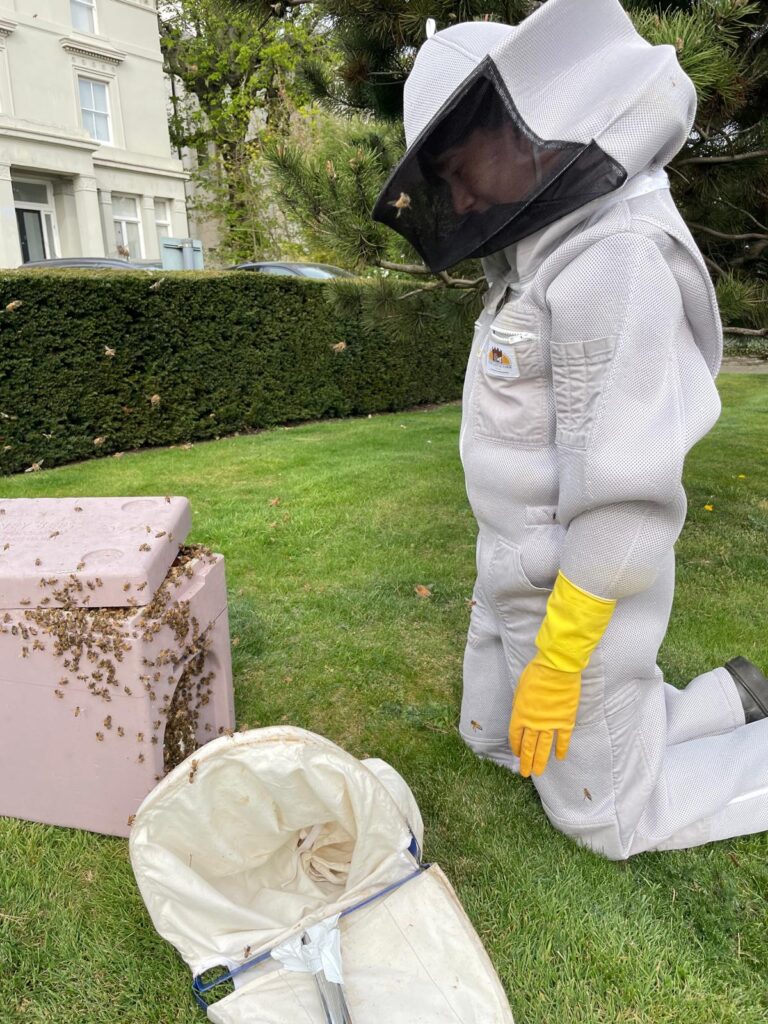Between May and June, honeybee swarms are a common sight in the UK – though with changing weather patterns, swarms are being spotted earlier and later than ever. You may have heard the old saying:
A swarm in May is worth a load of hay.
A swarm in June is worth a silver spoon.
A swarm in July isn’t worth a fly.
This traditional rhyme tells us how valuable a swarm can be to a beekeeper, depending on when it happens. But in recent years, we’ve heard reports of swarms as early as March – and who knows how long the swarming season will now continue?
Why Do Honeybees Swarm?
A swarm is how a honeybee colony reproduces. It’s a sign of a thriving hive. When a colony runs out of space – often in a managed hive – the bees decide it’s time to split.
Here’s what happens:
- The old queen leaves the hive with about half the bees.
- They set off to find a new home.
- Back in the original hive, the remaining bees raise a new queen from existing larvae.
It’s nature’s way of multiplying honeybee populations.
Can Swarming Be Prevented?
Yes – with careful beekeeping management. At Highgate Honey, we keep our bees in London, where a swarm of bees in the city can cause chaos. We work hard to manage our colonies and reduce the risk of swarming. But despite best efforts, occasional swarms are inevitable – it’s part of being a beekeeper.
What Does a Honeybee Swarm Look Like?
If you’ve never seen a swarm before, it can be quite an exhilarating spectacle. Thousands of bees pour out of the hive at once. The air fills with buzzing, and it might sound like a roar. But don’t panic – the bees aren’t interested in you.
Once they leave the hive, the bees gather nearby – often in a tree, fence post, or bush – forming a tight ball-shaped cluster around the queen. They may stay in this temporary spot for a few hours or even a couple of days while scout bees search for a new home.
Are Honeybee Swarms Dangerous?
Not usually. Swarming bees are generally not aggressive, because they’re not defending a hive full of brood and honey. They’re focused on protecting the queen and finding a new place to live. That said, it’s always best to keep a respectful distance.
What Happens to Swarms?
If you spot a swarm, it can often be safely collected by a local beekeeper. This is easiest when the bees are still clustered. The beekeeper can carefully transfer the swarm into a box or hive and give them a new home.
It’s a win-win: the bees are safely rehomed, and the beekeeper gains a new colony.
✅ Tip: If you’re based in North London, contact us directly for help with local swarm collection.
What to Do If You See a Honeybee Swarm
- Stay calm – don’t swat at the bees or disturb them.
- Wait until they cluster – they usually settle within 15–30 minutes.
- Contact a local beekeeper – who may be able to collect them safely.
You can find someone in your area via the British Beekeepers Association swarm map.
What to Expect When You Contact a Beekeeper
The beekeeper will likely ask:
- What the bees look like (to confirm they’re honeybees, not wasps or bumblebees)
- Where they are (to assess whether collection is possible)
- For photos – these really help us plan
If it’s a safe and accessible location, the beekeeper will arrange a time to come and collect the swarm. Please be patient – especially during peak season, we can get multiple calls a day!
Final Thoughts
Swarming is a natural part of the honeybee lifecycle – and a sign of a healthy colony. While it can look dramatic, it’s usually harmless and manageable with the help of a beekeeper.
If you live in London and need advice or help with a honeybee swarm, get in touch with us here. We’re always happy to help.

